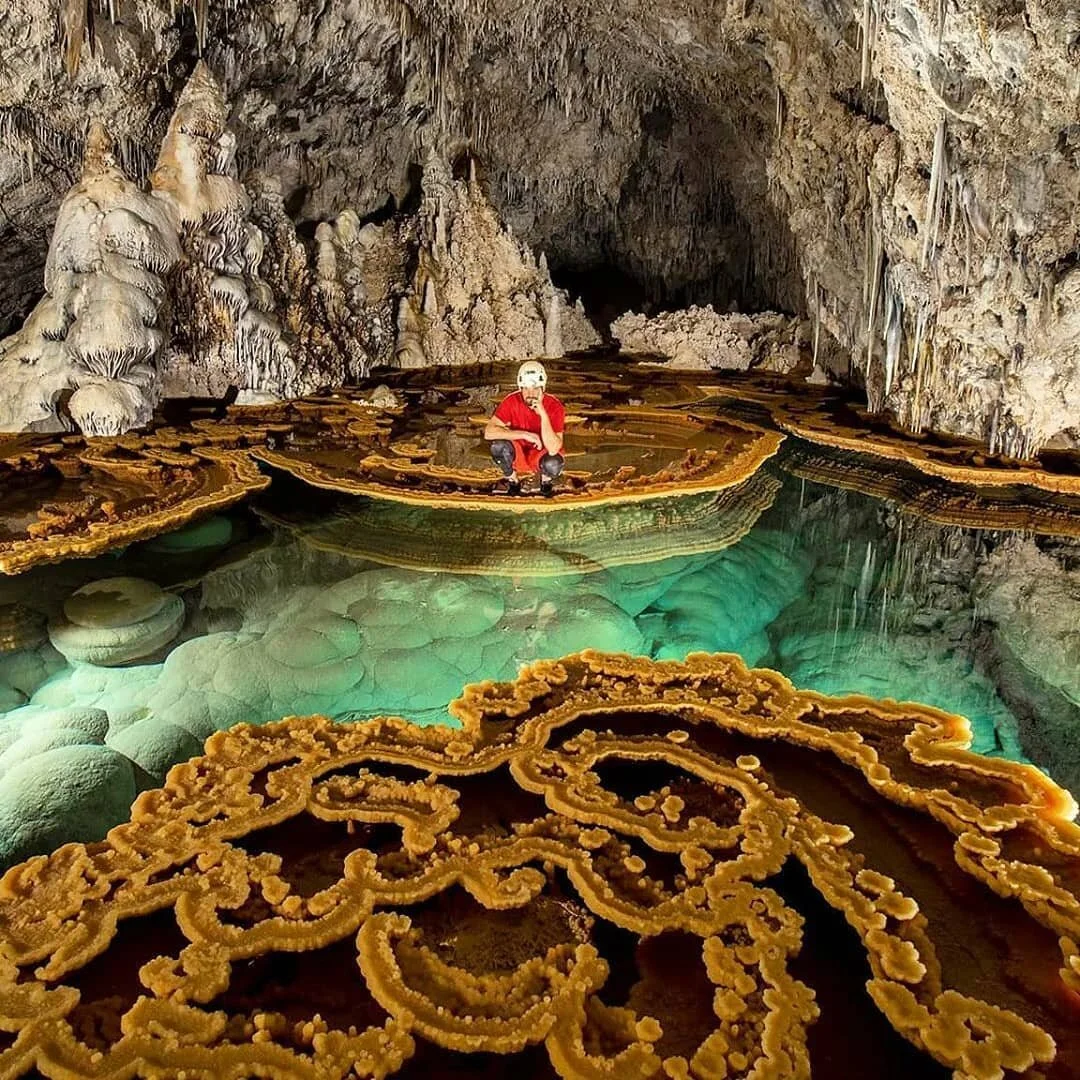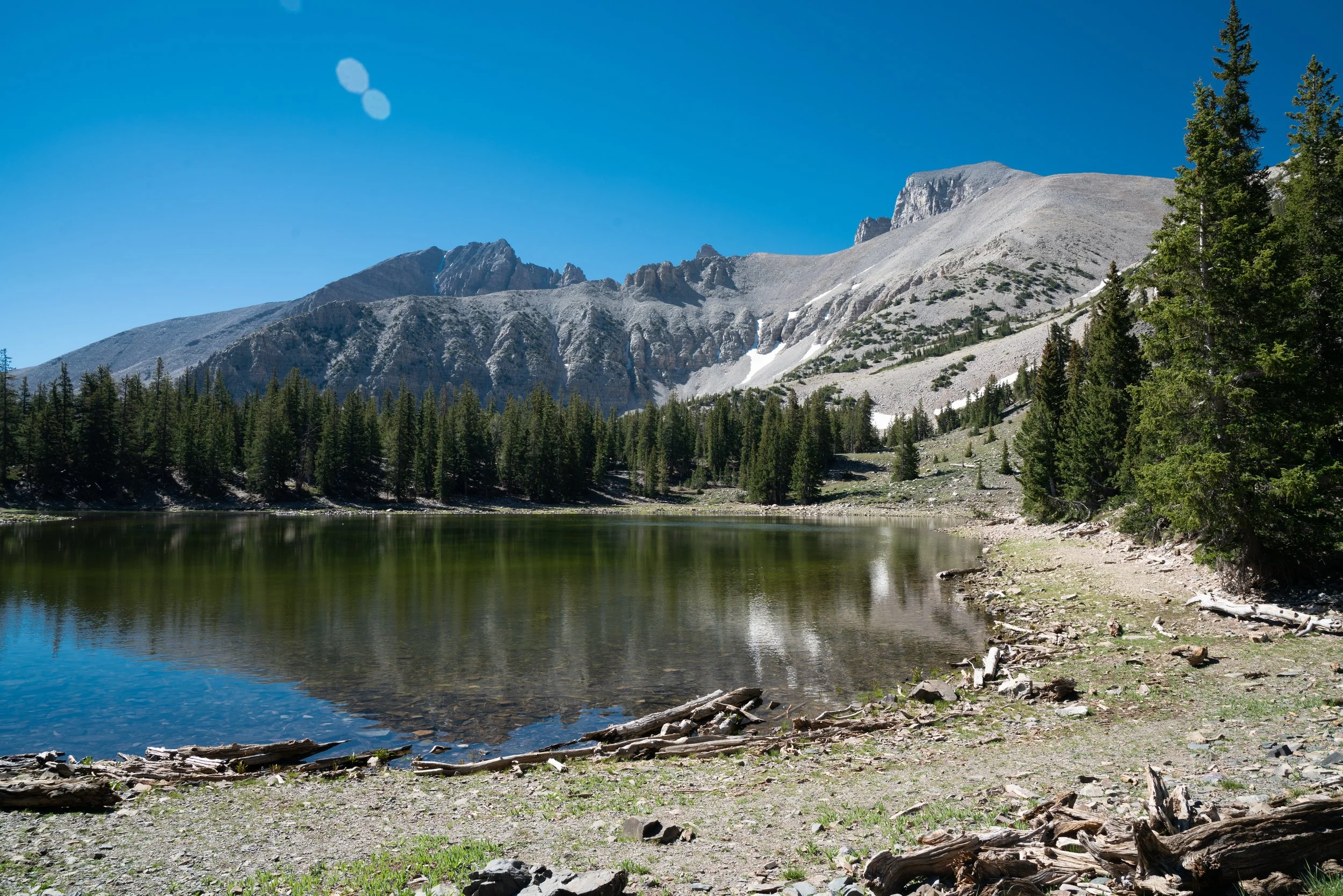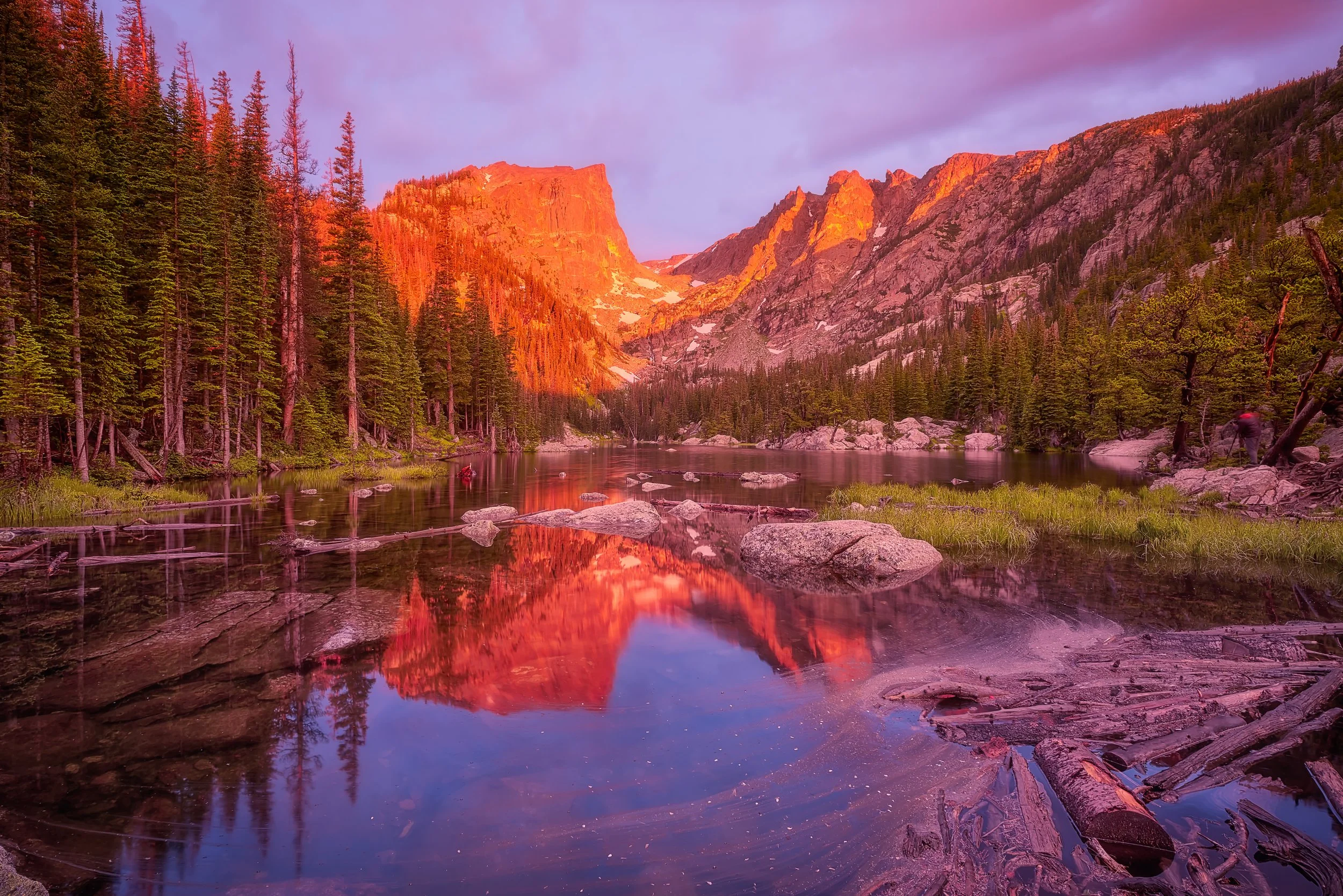BERING LAND BRIDGE NATIONAL PRESERVE (ALASKA)
In the summer of 2016, I had the privilege of serving as the Artist-in-Residence for Bering Land Bridge National Preserve in Alaska. I spent an amazing week exploring the unusual geology around Serpentine Hot Springs, and this composition captures both the majesty and mystery of that location. Written for Ron Horner and the Nome-Beltz High School band and choir, it was premiered in Nome in 2017 and then performed again in the spring of 2018 at the Alaska Region 1 Honors Music Festival.
big bend national park (Texas)
River Runner (for trombone and piano) is a musical representation of memories, landscapes, and emotions experienced during a kayaking trip through Santa Elena Canyon in Big Bend National Park. The three movements, named after landmarks encountered during the journey, each filter the subject matter through a different perceptual lens, thus providing different “angles” on the event. My intent was to not be merely representational, but to provide layers of association and meaning in a manner that more closely represents the complexity of our own memories.
CARLSBAD CAVERNS NATIONAL PARK (NEW MEXICO)
One of the more strenuous and adventurous places to visit at Carlsbad Caverns National Park is the Hall of the White Giant. Far off the public walkways, this four-hour adventure is a real spelunking trip replete with muddy scrambles, exhausting climbs, clothing-ripping tight spaces, and (of course) amazing rock formations as the reward. While this solo marimba piece does not recount the journey in a literal sense, it attempts to capture some of the emotions, frustrations, and surprises of the experience. Imagine impenetrable darkness, precarious ledges, and rock frozen in breathtaking cascades.
Also within the boundaries of Carlsbad Caverns National Park there is a remarkable underground world contained in a cave called “Lechuguilla” that was only truly discovered in 1986 and is still being explored. This five-minute work for flute and clarinet explores the interrelationships between themes representing air, rock, and water. It combines traditional techniques with extended demands on the players including key clicks, air blown through instrument, harmonics, and pitch bending.
Denali National Park and preserve (Alaska)
I began my deep relationship with Denali National Park in 2011 when I served as the first composer to be Artist-in-Residence. The piece I wrote (also called Denali) was premiered that same year by the Russian String Orchestra and had it's Alaskan premiere inDenali's visitors center in 2012. The success of this collaboration led to the formation of the Composing in the Wilderness workshop which is offered each year collaboratively with the Fairbanks Summer Arts Festival, Alaska Geographic, and the National Park Service.
Gates of the Arctic National Park and Preserve (Alaska)
I served as Artist-in-Residence at Gates of the Arctic National Park in the summer of 2012. The resulting piece was premiered by the Boulder Philharmonic and has been subsequently performed by the Fairbanks Symphony (Alaska), the Rochester Philharmonic (New York), and the Shreveport Symphony (Louisiana). This work (like other orchestral works in this series) is performed with synchronized projected images.
GLACIER BAY NATIONAL PARK (ALASKA)
In the summer of 2012, I had the privilege of serving as Artist-in-Residence at Glacier Bay National Park in Alaska. During my time there, I spent five days on a floating cabin in South Sandy Cove, went out on the whale research boat, traveled up-bay to the glaciers, and interviewed a Tlingit Elder. It was a life-changing and inspiring two weeks. The resulting piece of music is a 12-minute orchestral piece that follows the dramatic arc of the this poem written during the residency. It was premiered in March, 2014 by the East Texas Symphony Orchestra under the direction of Richard Lee.
GLACIER NATIONAL PARK (MONTANA)
In the summer of 2014, I had the amazing privilege of serving as the Artist-in-Residence at Glacier National Park in Montana. I was able to live in the park for a month, exploring the mountains, trails, wildlife, and cultural history that make this place so compelling. The resulting piece of music is a 5-minute orchestral piece that fully embraces Glacier's "wild west" history and has echoes of guitars, fiddles, and steam locomotives. Late in 2015, it was recorded by the Moravian Philharmonic and is included on the SPARKS CD release from Navona records.
GREAT BASIN NATIONAL PARK (NEVADA)
In 2021, This was the first park I visited following the Covid-19 pandemic. I was struck by the tenacity and beauty of the plant life that thrives in this high desert mountain. I was there as part of a commission from the Grand Valley State University New Music Ensemble with funding from the National Endowment for the Arts. The resulting piece, Blue True Dream of Sky, was subsequently performed at many national parks around the USA over multiple years.
GREAT SAND DUNES NATIONAL PARK (COLORADO)
In 2023 I spent nearly two weeks living in the park and exploring it’s inspiring and expansive landscape. This will result in an orchestral work titled Wind, Water, Sand which will be premiered by the Boulder Philharmonic Orchestra in January of 2025.
Kings Canyon National Park (California)
This six-minute piece for trumpet ensemble focuses on the iconic valleys and peaks of Kings Canyon National Park. Premiered in Sydney Australia at the 2010 Convention of the International Trumpet Guild, it has subsequently been performed at Stephen F. Austin State University and the College-Conservatory of Music at the University of Cincinnati.
LAKE CLARK NATIONAL PARK (ALASKA)
I spent a wonderful week in Lake Clark National Park as part of Composing in the Wilderness in 2023, but then was able to turn my experience into a band piece on a commission from Washington & Lee University titled Alpine Flight. It was premiered in April of 2024.
MESA VERDE NATIONAL PARK (COLORADO)
Anyone who has ever visited the cliff dwellings at Mesa Verde National Park knows the eerie emptiness that pervades this unusual location. It is difficult to escape the sensation that these abandoned structures are still alive with the echoes and memories of the Puebloan people that left so long ago. This composition, written in 2013, imagines a tentative descent into an ancient kiva where the past comes to life in a vibrant and exuberant dance, then evaporates suddenly as the fire sends smoke up the chimney and out into the night.
MOUNT RAINIER NATIONAL PARK (WASHINGTON)
This twelve-minute composition for saxophone quartet and percussion, composed in 2011, roughly follows the major events of the rescue efforts that ensued over next three agonizing days for two climbers on Mount Rainier. In this piece, a series of musical snapshots and recurring musical gestures portray rescue attempts, desperate phone calls, and nights alone on the mountain. The poignant mixture of adventure, fear, heroism, and grief in this event form a highly personal microcosm of emotions and actions felt around the world in recent years.
In 2024, I was invited to serve as the Composer in Residence for Mount Rainier National Park as part of the celebration of their 125th anniversary. This collaboration will involve multiple visits to the park over the year, public presentations in the park and surrounding community, and then result in a new work for symphony orchestra with projected imagery. HERE is the press release from the park.
Rocky Mountain National Park (colorado)
In 2010 I had the rare honor of being selected as Artist-in-Residence at Rocky Mountain National Park. That resulted in a four-movement sonata for trumpet and piano (The Timberline Sonata) which was premiered the following year at the Estes Park Music Festival.
In 2016, as part of the centennial celebration of the National Park Service, the Boulder Philharmonic received an NEA grant to commission me for a new piece about Rocky. This work (All the Songs that Nature Sings) was premiered in 2017 both in Colorado and at Washington D.C.'s Kennedy Center for the Performing Arts as part of the SHIFT Festival of American Orchestras.
In 2022, I was once again able to reconnect with this place when the Estes Park Community Band commissioned me to write a piece for them. For this, I made a new arrangement of the third movement of The Timberline Sonata and titled it Dream Lake.
Saint-Gaudens National Historic Site (New Hampshire)
Celebrating the history of the Cornish Colony and the work of its central figure, Augustus Saint-Gaudens, this 20-minute work for string quartet attempts to capture elements of the landscape, artwork, and friendships that are memorialized at Saint-Gaudens National Historic Site. The three main sections of the piece are connected by cello solos and performed as one continuous movement. This piece was commissioned by the Trustees of the Saint-Gaudens Memorial and premiered on August 21, 2016 by the Arianna Quartet in the Little Studio at Saint Gaudens National Historic Site, Cornish, New Hampshire.
Sequoia national park (California)
A somber and introspective piece for trombone choir which attempts to capture the beauty, longevity, and solemnity of the immense trees of Sequoia National Park.
Written in 2010 for Deb Scott and the SFA Trombone Choir and premiered at the International Trombone Association conference in Austin, Texas.
Wrangell-St. Elias National Park and Preserve (Alaska)
A substantial work for wind ensemble, this 13-minute piece celebrates the history surrounding the Kennecott Copper Mine in the Wrangell Mountains of southeastern Alaska. Now a ghost town, it once was the largest copper deposit known in the world. This exciting and moving piece draws on folk, ragtime, and contemporary techniques to tell the story of the brave people who lived and worked in this remarkable place. Written in 2014 and premiered by the SFA Wind Ensemble.
YOSEMITE NATIONAL PARK (CALIFORNIA)
Range of Light was written for saxophonist Nathan Nabb in 2014 and is a tour-de-force for the advanced saxophonist. Each of the four movements is based on selected photographs of Yosemite National Park by Ansel Adams. It is available on both the Encounters and Range of Light CDs. The haunting third movement ("Jeffrey Pine") has also been adapted for Pierrot ensemble.
Yukon-Charley Rivers National Preserve (Alaska)
This work was commissioned by the Fairbanks Summer Arts Festival with support from the Rasmussen Foundation. It was inspired by the Yukon Quest dog sled race run every year between Whitehorse and Fairbanks. This race passes through Yukon-Charley Rivers National Preserve and Slaven's Roadhouse (within the park) serves as a waypoint for teams on their 1000-mile trip. It is written for mixed octet and was premiered at the Fairbanks Summer Arts Festival in 2017.





















